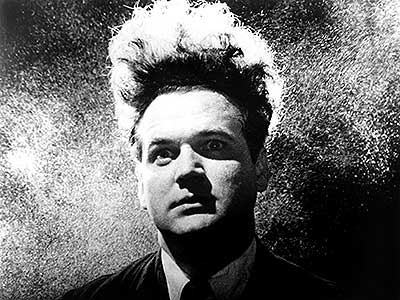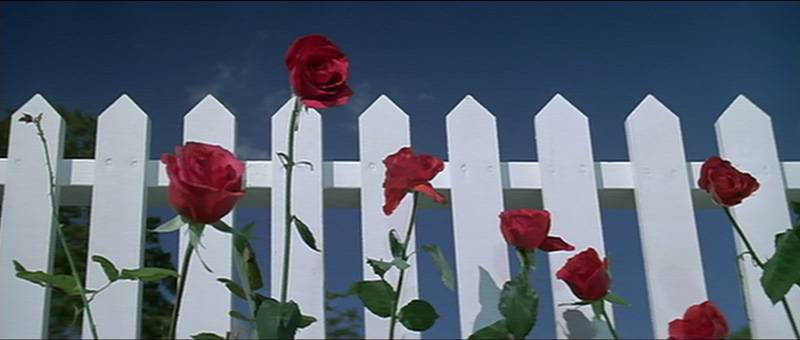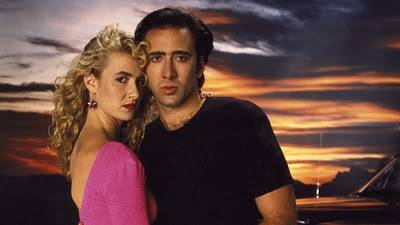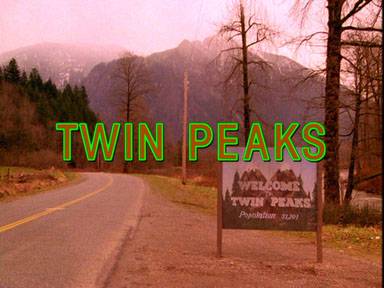I discovered the art of David Lynch entirely by accident, although I had shown a keen interest in films from a relatively young age, I usually arrived at them by way of the star appearing in them. As a budding actor I wanted to study the best and through watching the likes of James Stewart, Jack Lemmon, Peter Sellers and Robert DeNiro, I became aware of the writers and directors behind the camera. Stewart led me to Alfred Hitchcock, Lemmon to Billy Wilder, Sellers to Stanley Kubrick, DeNiro to Martin Scorsese and so on; all great artists but, by and large, part of the acceptable face of “Off Hollywood”.
I was extremely lucky to be a teenager during the 1980s boom of home video and within a 10 minute walk of my parents’ house was a small independent video rental store with a fairly eclectic collection which, in one school summer holiday, I started to work my way through. The store owner was quite lax about the age certification and, at 16, I was able to rent 18 certificate movies without too much difficulty. He also must have had more than a cursory knowledge of the titles because on one shelf he had stacked in order Young Frankenstein, The Elephant Man, Eraserhead, River’s Edge, Blue Velvet and Dune, I believe, I watched them in that order.
In 1990, whist I was studying A-Level English & Drama, I went to see Wild At Heart at the cinema 3 times during the first week of its release and later that year Twin Peaks was on television and I knew that this was unlike anything I had ever experienced in the mainstream before. As Lynch went on to make Lost Highway and Mulholland Drive and my knowledge of cinematic history deepened I could trace influences of Hitchcock and Kubrick in Lynch’s work and recognise that Twin Peaks owed something to Patrick McGoohan’s seminal, cult TV series, The Prisoner.
After training as a painter at the Pennsylvania Academy Of Fine Art and experimenting with short stop motion films like The Grandmother, Lynch relocated to Los Angeles and was awarded a grant by the American Film Institute to make his first feature length film, Eraserhead. The movie was to take the best part of 7 years to complete and contains visual images that were to reoccur regularly in Lynch’s subsequent works; most notably stark electric lighting, industrial ambient sound, and a startling appearance of Jack Nance, as Henry, the father of the mutant baby which preoccupies the film.
Lynch, who famously avoids giving specific interpretations of his work, acknowledges that Eraserhead was a visual poem inspired by his life as a student in Philadelphia and unexpectedly becoming a father at the age of 22. The film was a favourite of Stanley Kubrick who used to screen it privately to guests, and on the basis of viewing it, producer Mel Brooks was to offer David his next directorial project, The Elephant Man, starring John Hurt in the title role, Anthony Hopkins and Brooks’ wife, Anne Bancroft. The film revealed Lynch’s ability to engage an audience on an emotional level and not just be a conjurer of surrealist imagery.
The critical success of The Elephant Man saw Lynch almost directing the 2nd (or 5th if you were born in 1990s!) film in George Lucas’ Star Wars saga but instead he was assigned to the Dino De Laurentis epic Dune, a big-budget adaptation of Frank Herbert’s sprawling Sci-Fi chronicles. The film was not a financial success and personally for Lynch it was a traumatic experience because he didn’t have final cut, but from the ashes of Dune was born what many feel to be Lynch’s masterpiece, Blue Velvet, again produced by the De Laurentis company.
In Blue Velvet Lynch further explores one of his key themes, life in “Small Town, USA” and the dark underbelly of the American Dream. Lumberton is a far cry from the surreal, industrial waste land of Eraserhead; this is a dreamlike re-imagining of the Midwestern towns Lynch grew up in and a forerunner to Twin Peaks. Jeffrey Beaumont (Kyle MacLachlan) is a stand in for Lynch, the young Eagle Scout from Missoula, Montana, he is also the namesake of L.B. “Jeff” Jefferies from Hitchcock’s Rear Window, only this Jeff doesn’t spy from the safe distance of his bachelor apartment but from within the proximity of a bedroom closet. I can’t do justice to these films in this introductory post but I shall return to review each of them thoroughly.
Wild At Heart takes the first book in Barry Gifford’s series of tales about Sailor And Lula as its starting point and then blends it with The Wizard Of Oz filtered through Elvis Presley and Marilyn Monroe. It’s an out and out American Fairytale in the tradition of the Brothers Grimm and it contains dynamic, raw performances from Nicolas Cage and Laura Dern as the star-crossed lovers Sailor and Lula, and an exceedingly creepy Willem Dafoe, last seen playing Jesus in Scorsese’s Last Temptation Of Christ, as the lawless Angel of Death, Bobby Peru.
When I heard that David Lynch intended to work on a TV serial with Hill Street Blues creator, Mark Frost, I was sceptical to say the least. What transpired though was Twin Peaks and it captivated audiences with its surreal blend of daytime Soap Opera and esoteric Police Procedural. For a time it seemed that everybody on the planet wanted to know who killed Laura Palmer, unfortunately once that questioned was finally answered the mystery at the heart of the story vanished along with large amount of the show’s viewers, leading to its eventual cancellation after 29 episodes. The series was followed by the feature film prequel Fire Walk With Me, which successfully manages to lie to rest Laura’s spirit and provide the show’s remaining, loyal fans with some sort of closure.
Lynch collaborated on the script for Lost Highway with Wild At Heart author Barry Gifford, producing a very dark story about a jazz saxophonist, Bill Pullman, who finds himself in the electric chair for murdering his wife and then metamorphoses into younger Balthazar Getty to avoid the death penalty. This film marked the turning point in Lynch’s work where it became clear that the apparent literal meaning of the narrative was only window dressing for the subtext at its heart and Lynch exploited this style further in Mulholland Drive, again I shall save my detailed analysis, drawing comparisons to Hitchcock’s Vertigo, for a later post.
David Lynch’s most recent film Inland Empire was shot entirely using digital video cameras and with it he has gone on the record stating that “For me, film is dead”. Whilst many cinematic purists view this as heresy, I have to say that I found the end results very liberating and if working digitally ensures an ongoing output from Lynch then more power to his elbow.







6 thoughts on “David Lynch”
Awesome Blog. I add this Post to my bookmarks.
Very informative post.
Thanks for an informative post. Pleasant reading, and I will look forward to some further postings from you. Best Regards…
You can subscribe to my RSS feed. http://www.online-inquirer.com/feed/
It’s a WordPress template that I’ve customised by trial and error. I’m quite happy with it too. Thanks. 🙂
I’ve heard the same thing regarding the diaprsity between the seasons. Season 1 is supposed to be great, but season 2 kind of went off the rails because the network forced them to do some things, including revealing Laura Palmer’s murderer. I know David Lynch originally never wanted to reveal the killer, leaving it a mystery for the entire series. So perhaps that’s why the second season was less than stellar. I’ll try to watch them all together and then we can discuss.
Comments are closed.